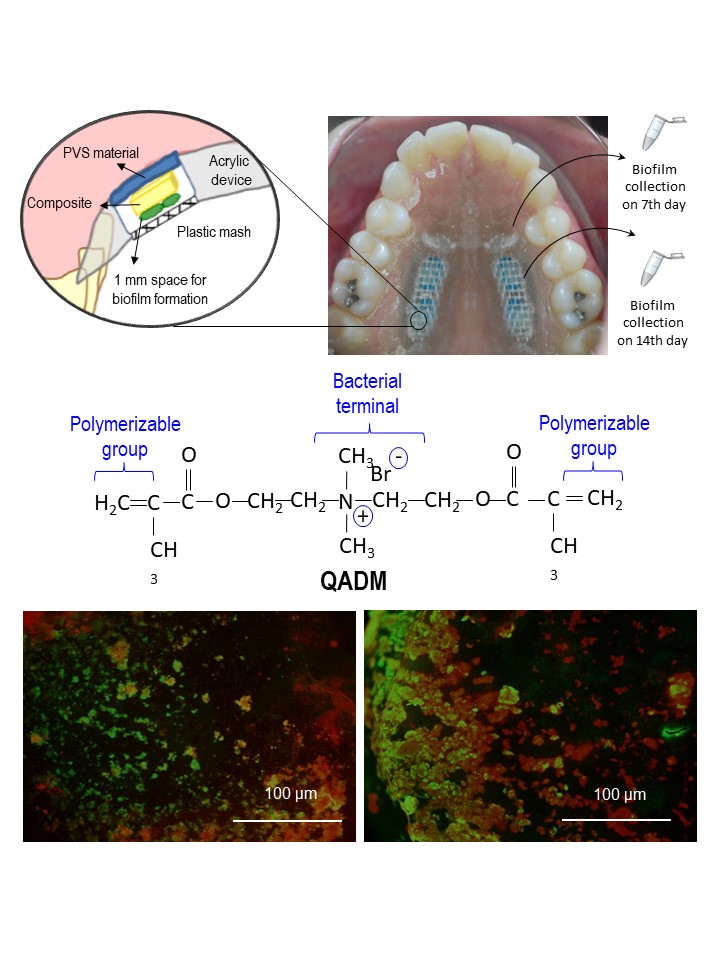Preprint
Article
Human in situ Study of the Effect of bis(2-methacryloyloxyethyl) Dimethylammonium Bromide Immobilized in Dental Composite on Controlling Mature Cariogenic Biofilm
Altmetrics
Downloads
286
Views
289
Comments
0
A peer-reviewed article of this preprint also exists.
This version is not peer-reviewed
Submitted:
08 October 2018
Posted:
09 October 2018
You are already at the latest version
Alerts
Abstract
Cariogenic oral biofilms cause a considerable amount of recurrent dental caries around composite restorations every year, resulting in unprosperous oral health status and expensive restorative treatment for many patients. Quaternary ammonium monomers that can be copolymerized with the current dental resin systems have been increasingly explored for modulation of dental plaque biofilm growth over dental composite surfaces. Here, we investigated the effect of bis(2-methacryloyloxyethyl) dimethylammonium bromide (QADM), against human overlying mature oral biofilms grown intra-orally in human participants for 7 and 14 days, for the first time. Seventeen volunteers wore palatal devices containing composite specimens containing 10% by mass of QADM or a control composite without QADM. After 7 and 14 days, the adherent biofilms were collected for determination of bacterial counts via colony-forming unit (CFU) counts. The biofilm viability, chronological changes, and percentage coverage were also determined by live/dead staining. QADM composites caused a significant inhibition of S. mutans biofilm formation for up to seven days. No difference in the CFU values were found for the 14-day period. Our findings suggest that (1) QADM composite was successful in inhibiting 1-3 day biofilms in the oral environment in vivo; (2) QADM significantly reduced the portion of S.mutans group in a time course where patients at high risk of caries would develop initial enamel carious lesions; and (3) stronger antibiofilm activity is required for the control of mature long-term cariogenic biofilms. These results provide a perspective on the value of integrating bioactive restorative materials with traditional caries management approaches into clinical practice. Contact-killing strategies via dental materials aiming to prevent or at least reduce high numbers of cariogenic bacteria seem to be a promising approach in patients at high risk of recurrence of dental caries around composites.

Keywords:
Subject: Chemistry and Materials Science - Biomaterials
Copyright: This open access article is published under a Creative Commons CC BY 4.0 license, which permit the free download, distribution, and reuse, provided that the author and preprint are cited in any reuse.
MDPI Initiatives
Important Links
© 2024 MDPI (Basel, Switzerland) unless otherwise stated






